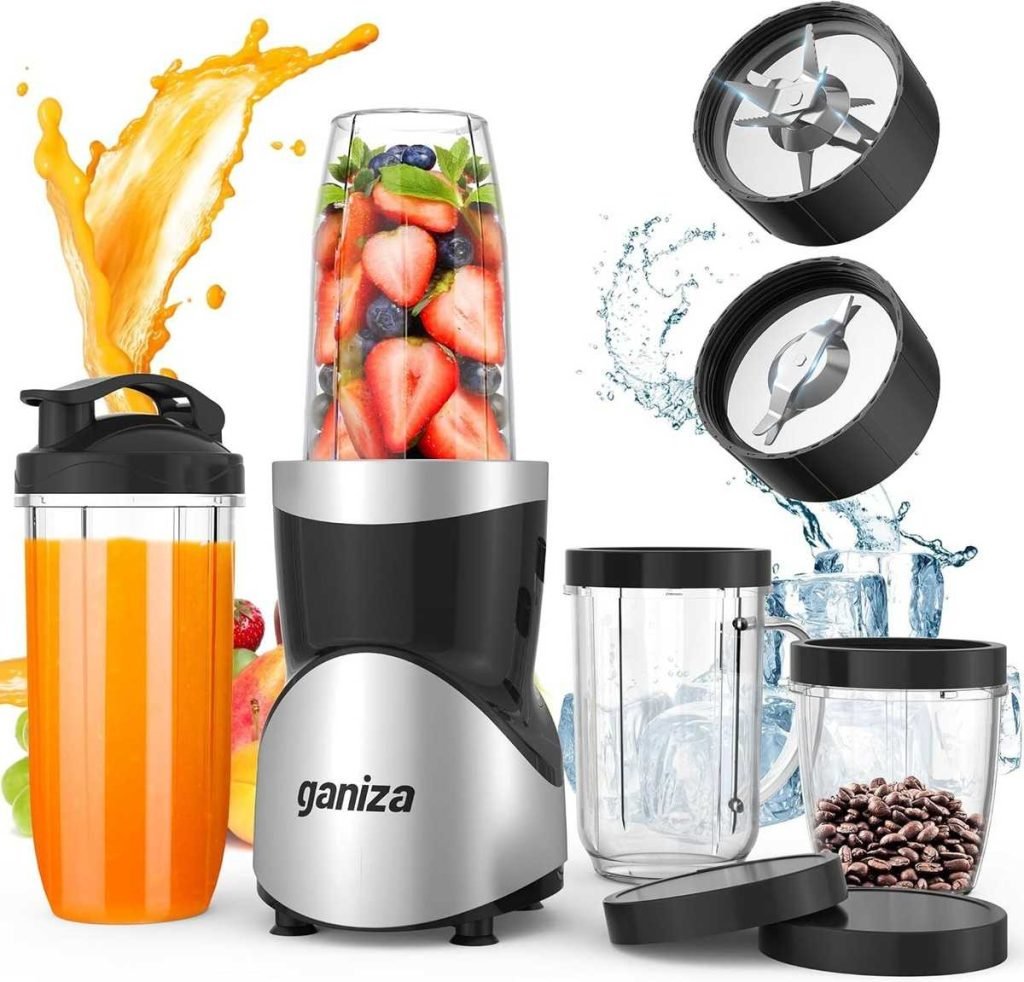To fix loose parts or a shaky base in your blender, tighten all screws, check for damaged components, and ensure the jar is seated properly. Replacing worn-out parts can also restore stability, making your blending smoother and safer. Regular maintenance can prevent annoying vibrations and prolong your blender’s life.
If your blender is wobbling or parts are loose, start by inspecting and tightening screws and attachments. Make sure the jar is securely seated, and replace any worn or damaged components. A little upkeep can go a long way in keeping your blender steady and performing optimally.
A shaky blender can be frustrating and potentially dangerous, especially if it causes spilling or damage. Often, the issue stems from loose screws, worn-out gaskets, or an unbalanced jar. Fortunately, fixing these problems is straightforward and can be done with basic tools and some patience. Whether your blender is making strange noises or just not sitting still, fixing the loose parts and stabilizing the base can restore its smooth operation, saving you money on repairs and frustration in the kitchen. Regular checks and maintenance will keep your blending experiences hassle-free and efficient.
Fixing Loose Parts or Shaking Base in Blenders
If your blender is rattling or its base feels unstable, it can be frustrating and affect performance. Loose parts or a shaky base can lead to inefficient blending and even damage your appliance over time. Fortunately, most issues are fixable with some simple steps and routine maintenance.
Understanding Why Blenders Shake or Have Loose Parts
Blenders shake or make noise when certain components are loose or worn out. Common reasons include worn-out seals, loose blades, or a misaligned base. Understanding these causes helps you identify the right fix quickly.
Worn or Damaged Blades
Over time, blades can become loose or dull, causing imbalance. When blades are loose, they wobble during operation, leading to vibrations or shaking. Damaged blades may also cause uneven blending and noise.
Loose or Faulty Motor Coupler
The motor coupler connects the blender’s motor to the blade assembly. If this part is loose or cracked, it can cause slipping, vibration, and noise. Replacing the motor coupler often restores proper functioning.
Unstable Base or Glass Jar
A shaky base can be due to an uneven surface or a worn-out rubber footing. If the jar or pitcher wobbles, it may be because the locking mechanism is damaged or the base no longer provides proper stability.
Loose Bolts or Screws
Over time, screws securing the base or motor assembly may loosen. This can lead to rattling noises and instability during blending. Regular tightening of these screws can prevent or fix the problem.
How to Diagnose the Issue
Before fixing, it’s essential to pinpoint what causes your blender to shake. A quick diagnosis saves time and prevents unnecessary repairs.
- Check if the jar is properly secured on the base.
- Inspect the blades for looseness or damage.
- Examine the rubber footing for wear or cracks.
- Listen for unusual noises during operation.
- Try blending simple ingredients to see if vibrations persist.
Step-by-Step Guide to Fix Loose Parts and Shaking Blenders
1. Secure the Blender Jar
Begin by ensuring the jar is correctly placed on the base. Many blenders have a locking mechanism or a twist-lock system. Confirm that it is fully engaged and securely tight.
2. Tighten Screws and Bolts
Turn off and unplug your blender before inspecting. Use a screwdriver or wrench to tighten any loose screws or bolts on the base. Focus on areas around the motor housing and the jar attachment points.
3. Replace or Repair the Motor Coupler
If the motor coupler appears worn or cracked, replace it following your blender model’s specific instructions. Typically, this involves removing the bottom plate of the blender, detaching the old coupler, and installing a new one.
4. Inspect and Replace Blades
Remove the blender jar and examine the blades. If they are loose, dull, or bent, consider replacing the blade assembly. Always follow safety guidelines when handling blades, as they are sharp.
5. Check the Rubber Footings
Look for cracks or missing pieces in the rubber footings on the bottom of the base. Replace worn or damaged footings with new ones, which you can usually order from the manufacturer or find at appliance stores.
6. Level the Blender on a Flat Surface
Place the blender on a stable, flat surface. If your surface is uneven, consider placing a mat or coaster underneath to reduce vibrations. Ensuring the blender is level minimizes shaking during use.
Additional Tips for Maintaining Blenders
Routine maintenance can prevent many issues related to loose parts or shaking. Regularly check and tighten screws, inspect blades, and clean components to keep the blender functioning smoothly.
Cleaning and Maintenance
- Use warm, soapy water to clean the jar and blades after each use.
- Periodically check the gasket for debris or damage and replace if necessary.
- Avoid overfilling the jar, which can cause strain on components.
- Follow the manufacturer’s guidelines for lubrication or replacement parts.
When to Call a Professional
If you have tried all troubleshooting steps and your blender still shakes or parts remain loose, it is wise to contact a professional repair technician. Persistent issues may require internal repairs or replacement of major components.
Preventing Future Problems
Preventative care extends the life of your blender and reduces the chance of loose parts. Keep your blender on a level surface, avoid blending hard substances for extended periods, and perform regular inspections.
Use Your Blender Correctly
- Follow the recommended ingredients and quantities.
- Do not run the blender empty or with the lid off.
- Allow the motor to cool between heavy blending tasks.
Store Properly
Store your blender in a dry, safe place, ensuring no undue pressure or weight is placed on it. Proper storage prevents damage to the base and jar.
Related Topics
- Replacing Blender Gaskets: Keep the seal tight to prevent leaks and reduce vibrations.
- Upgrading to a Heavy-Duty Blender: For frequent use or tough ingredients, a sturdier model can minimize shaking issues.
- DIY Troubleshooting for Common Blender Problems: Tips for diagnosing and fixing issues beyond loose parts.
By understanding and addressing the causes of loose parts or a shaking base, you can ensure your blender runs smoothly for years. Regular maintenance and cautious use keep your appliance performing at its best and prevent future problems.
how to fix mixer jar blade #mixer
Frequently Asked Questions
What steps can I take to tighten loose components on my blender?
Start by unplugging the blender and inspecting all accessible parts. Use a screwdriver to tighten any loose screws on the jar, lid, or base. Check the blade assembly to ensure it is securely attached. If any parts are worn out or damaged, replace them to restore stability. Regular maintenance helps prevent parts from becoming loose over time.
How can I minimize shaking during blending without replacing parts?
Ensure the blender is on a flat, stable surface before use. Do not overload the container; blend in smaller batches if necessary. Firmly secure the lid and any removable components. Balancing the contents evenly inside the jar also helps reduce vibrations. Sometimes, simply tightening the jar onto the base before blending can make a significant difference.
What should I do if the blender’s base continues to shake despite tightening?
Check for debris or residue on the bottom of the blender and the surface it sits on, as these can cause instability. Inspect the base for cracks or warping that may contribute to shaking. If the base has rubber feet, verify they are intact and in contact with the surface. Replacing worn-out feet or the entire base can often resolve persistent shaking issues.
Are there specific tools I need to fix loose parts on my blender?
Typically, a Phillips or flat-head screwdriver works well for tightening screws on the blender. In some cases, an Allen wrench might be necessary for certain models. Keep a set of basic tools handy for routine adjustments. If parts require replacement, ensure you use compatible pieces recommended by the manufacturer.
Can regular cleaning help prevent parts from becoming loose or shaking?
Yes, regular cleaning removes food debris and buildup that can interfere with tight connections. Wipe down the base and components with a damp cloth, ensuring no moisture enters electrical areas. Proper maintenance extends the lifespan of the blender and maintains its stability during operation.
Final Thoughts
Fixing loose parts or shaking base in blenders is straightforward and enhances safety and performance. First, unplug the blender and check for loose screws or attachments. Tighten any loose components securely. If the base continues to shake, inspect the motor coupling or blades for wear and replace if necessary. Maintaining your blender ensures it runs smoothly and lasts longer, saving you time and money.
As an Amazon Associate, We earn from qualifying purchases. When you purchase a product through Amazon links on kitchenadvising.com, we may earn a small commission at no extra cost to you. This helps support the site and keep our content free.


